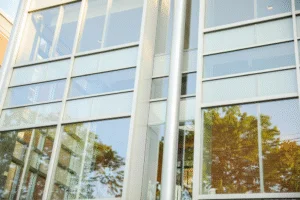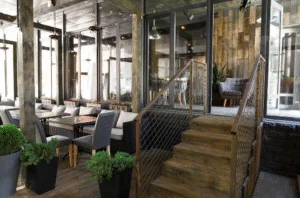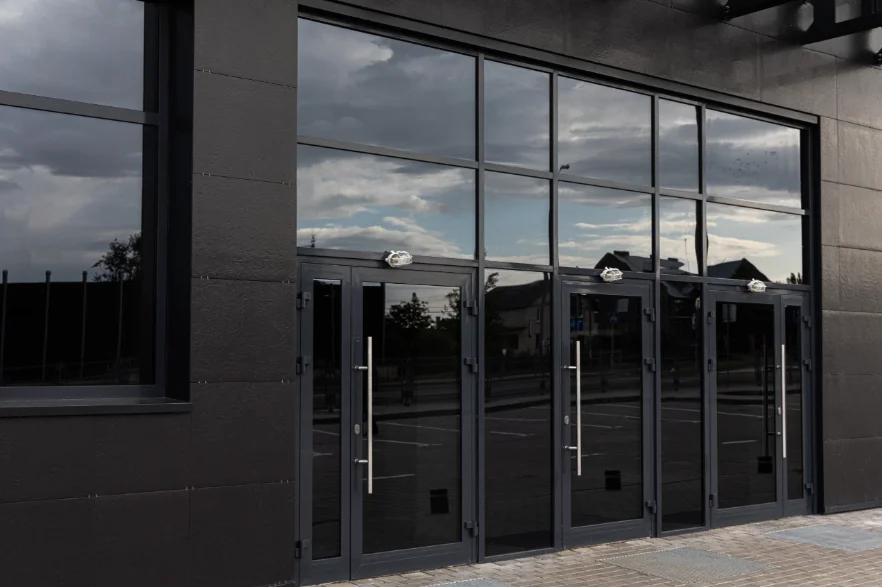
When it comes to commercial building projects, every decision made directly impacts long-term profitability. Among those decisions, one often underestimated choice is the selection of windows and doors. Yet, their influence on operating costs, energy consumption, and building value is far more significant than many realize. That’s where the ROI of commercial windows and doors becomes a key factor in strategic planning.
High-performance windows and doors are not just architectural elements — they’re long-term investments that can boost energy efficiency, reduce maintenance expenses, and even increase property value. As sustainability and operational cost reduction become essential in today’s commercial real estate, developers and business owners are turning their attention to smarter building components that truly deliver measurable returns.
This article will explore how high-performance commercial windows and doors directly impact ROI, with data-backed insights into energy savings, lifecycle durability, tenant comfort, and more. If you’re planning or managing a commercial property, understanding this return on investment will help you make decisions that go beyond aesthetics — and truly pay off.
What Are High-Performance Windows and Doors?
High-performance windows and doors are specifically designed to meet the growing demands of modern commercial buildings. Unlike standard options, these advanced solutions integrate innovative materials and engineering to enhance the overall functionality and efficiency. From thermal insulation to acoustic control and long-term durability, these elements are built to do more than simply separate interior and exterior spaces — they actively contribute to the building’s ROI.
At the core of their design is energy efficiency. High-performance windows and doors lower the reliance on HVAC systems by reducing the amount of heat transfer in and out of the building, leading to significant operational savings. This energy optimization directly supports the ROI commercial windows and doors deliver, particularly in climates with extreme temperatures where insulation matters most.
In addition to thermal performance, acoustic insulation is a key feature. Noise reduction in commercial spaces, especially in urban environments, enhances comfort for employees and clients, improving the overall working experience and contributing to productivity. These solutions also rely on high-quality materials like low-E glass, thermally broken aluminum frames, and advanced sealing systems — all of which extend the product’s life cycle and reduce maintenance needs.
When considering the ROI commercial windows and doors bring to a commercial project, it’s essential to understand that their benefits compound over time. They reduce energy bills, minimize repair costs, and increase tenant satisfaction, ultimately improving the building’s market value.
How High-Performance Windows and Doors Impact ROI
Investing in high-performance windows and doors goes beyond aesthetics — it directly impacts a building’s bottom line. These upgrades deliver tangible financial benefits that make a compelling case for any commercial project. The ROI commercial windows and doors offer can be measured through reduced operational costs, improved asset value, and long-term durability.
Energy Efficiency is one of the most immediate and measurable ways high-performance solutions impact ROI. By minimizing heat exchange, these systems help regulate indoor temperatures more effectively, reducing the reliance on HVAC systems. Over time, this leads to lower energy bills and a greener footprint, especially in large-scale commercial spaces. According to industry reports, energy-efficient buildings can save up to 30% annually in utility costs — a major contributor to the ROI commercial windows and doors can provide.
Another important factor is maintenance savings. Standard doors and windows often suffer from wear and tear, moisture infiltration, or faulty seals, leading to frequent repairs. In contrast, high-performance models are built with advanced materials designed to withstand harsh conditions, requiring less upkeep over their lifespan. These savings are especially relevant in commercial properties where downtime and repair interruptions can affect daily operations.
Additionally, property value appreciation is a crucial element. Modern, efficient windows and doors elevate the perception of quality in a commercial building, which is attractive to investors, tenants, and buyers. This aesthetic and functional upgrade can increase the resale value and rental potential — further reinforcing the ROI commercial windows and doors can bring to a long-term investment.
When evaluating upgrades for your building, understanding these layers of return helps guide better decisions. From lower energy costs to reduced maintenance and higher market value, the benefits of high-performance windows and doors go far beyond the initial installation.
The Real Impact on a Commercial Project
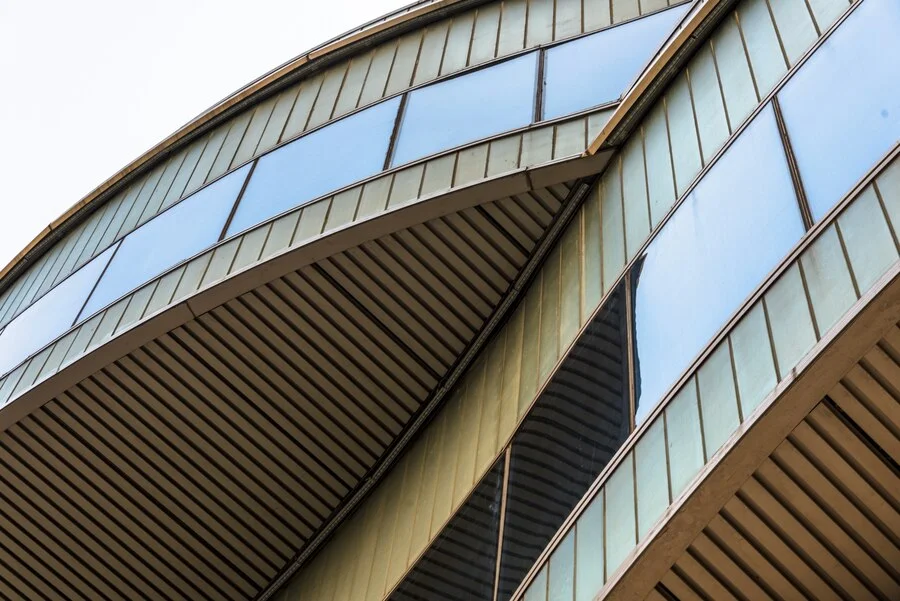
Consider a mid-sized office building in suburban Georgia, built in the early 2000s, which is now facing rising energy costs and tenant comfort issues due to outdated window and door systems.
Project Overview:
- Building Type: Two-story commercial office
- Square Footage: 20,000 sq. ft.
- Initial Window and Door System: Standard aluminum frames, single-pane glass
- Upgrade: High-performance systems with low-E glass, thermal breaks, argon-filled double panes, and reinforced doors with energy-efficient sealing
- Total Investment: $95,000
Before the retrofit, the building’s energy usage averaged around $2,800/month, driven by HVAC systems compensating for poor insulation and air leakage. After installing high-performance solutions, the building’s energy consumption dropped substantially, averaging $1,950/month — a monthly saving of $850.
Additionally, maintenance costs decreased by $1,200/year, thanks to the superior durability and resistance to wear of modern materials. Over five years, the building saw a combined operational saving of $51,000, which equals over 53% of the total investment recovered — not including the appreciation in property value.
However, the real ROI on commercial windows and doors goes beyond numbers. The property’s market valuation increased by 7%, driven by its improved energy performance rating and its appeal to tenants seeking sustainable, modern office spaces. Tenant turnover decreased, and one lease renewal even cited interior comfort as a reason for staying — proving that user experience can translate into retention and financial gain.
Beyond the tangible financial metrics, these upgrades improved employee comfort through reduced outside noise and more stable interior temperatures, which contributes to productivity. This aligns with data from Better Buildings Initiative showcase projects, where similar upgrades led to both utility savings and increased tenant satisfaction.
Furthermore, a USGBC report on green buildings shows that energy-efficient commercial upgrades, including windows and doors, consistently yield high ROI by lowering operating costs and boosting asset value. When paired with strategic energy planning, these decisions create long-term value for building owners and investors.
For professionals in the construction or commercial property sectors, examples like this prove that the ROI that commercial windows and doors provide is not theoretical — it’s proven. These upgrades not only protect against rising energy prices but also position properties competitively in a market that increasingly values sustainability and comfort.
Additional Benefits for Owners and Managers
While the ROI commercial windows and doors deliver in financial terms is impressive, their impact goes far beyond dollars saved. For property owners and facility managers, high-performance systems also provide non-monetary advantages that elevate the long-term value and usability of any commercial space.
One of the most notable benefits is occupant comfort. Upgraded windows and doors help regulate indoor temperatures more consistently, eliminate cold drafts, and reduce exposure to external noise. These factors contribute directly to improved tenant satisfaction and employee productivity. In office environments, for instance, studies show that workers perform better in spaces with consistent temperatures, natural light, and minimal noise disruptions. The result? Fewer complaints, greater retention, and enhanced workplace morale.
Another advantage lies in the area of sustainability and environmental responsibility. As local and federal regulations become stricter regarding building efficiency and emissions, using high-performance doors and windows positions a property to meet evolving compliance requirements. These upgrades can support LEED certifications, energy benchmarking goals, and even tax incentives, depending on the region.
High-performance systems also align with modern values — both from consumers and businesses — that prioritize eco-conscious choices. Choosing energy-efficient, sustainable components demonstrates that a building is future-ready. This can improve the property’s reputation and increase appeal among environmentally aware tenants and investors.
Moreover, high-performance windows and doors support healthier environments by improving indoor air quality and reducing reliance on HVAC systems. According to a study by Harvard’s T.H. Chan School of Public Health, indoor environmental quality is directly linked to cognitive function, health, and work output — a critical consideration for today’s hybrid office models and co-working spaces.
When evaluating the full picture, the ROI commercial windows and doors extends beyond budgets and balance sheets. They enhance usability, future-proof the building against regulations, and create a healthier, more productive space for everyone inside.
How to Choose Windows and Doors to Maximize ROI
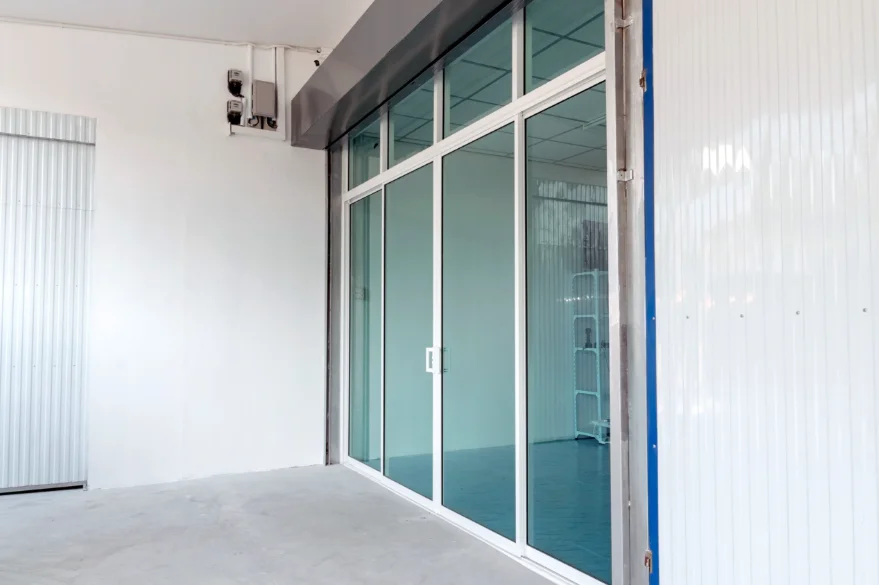
Choosing the right products means looking beyond price tags and focusing on long-term value. Here’s how to make informed decisions that pay off for years to come.
1. Prioritize High-Quality Materials:
Not all commercial windows and doors are built the same. To ensure performance over time, look for low-E glass, thermally broken frames, and multi-layer weather sealing. These materials help control temperature, reduce maintenance needs, and resist damage from the elements.
2. Check for Energy Certifications:
Look for products with recognized energy-efficiency certifications, which confirm that the window or door meets industry standards. Certifications such as Energy Star, NFRC ratings (National Fenestration Rating Council), and LEED-compliant components help verify the true performance of a product. These credentials aren’t just marketing — they’re your guarantee of measurable efficiency and savings.
3. Evaluate Durability and Lifecycle Cost:
Don’t be swayed by the lowest upfront cost. A slightly higher initial investment in high-performance units can translate to thousands saved in repairs, replacements, and energy bills. The total lifecycle cost — from purchase through operation and maintenance — should guide your selection.
4. Choose Reliable Suppliers and Installers:
Even the most efficient product underperforms when poorly installed. Work with experienced professionals who specialize in commercial-grade installations. Ensure they know local codes, insulation standards, and warranty-backed processes. We’ve prepared a detailed guide on choosing the right supplier and installer to support you in this step.
5. Weigh Initial Cost vs. Long-Term Savings:
The real ROI on commercial windows and doors becomes evident in the balance between short-term expense and long-term benefit. A proper ROI assessment should compare energy savings projections, expected maintenance frequency, and potential property value appreciation over time.
According to industry research from Energy Star, certified commercial windows can reduce building energy use by up to 35%. Similarly, the NFRC’s rating system helps compare thermal performance, while USGBC’s LEED framework encourages material selection that aligns with green building standards.
Choosing the right systems isn’t just about aesthetics or budget — it’s about ensuring your building performs efficiently, retains value, and meets growing sustainability expectations. The better your choices now, the stronger your ROI commercial windows and doors will be in the years ahead.
High-performance windows and doors are more than just building components
They’re strategic investments that can significantly impact the success of a commercial property. From reducing operating expenses to increasing asset value and tenant satisfaction, the benefits are both immediate and long-term. Whether managing a renovation or planning a new build, selecting the right windows and doors is essential to achieving optimal efficiency and performance.
At Top Notch Remodeling, we help you choose the right solutions tailored to your project’s needs — combining durability, style, and measurable value.
Ready to experience these benefits firsthand? Schedule a consultation with our team, and let’s explore how customized solutions can maximize the ROI commercial windows and doors can deliver to your building.

